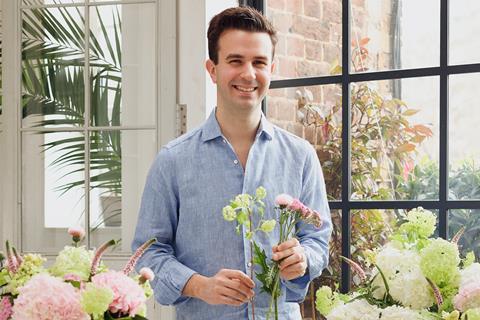
The co-founder of flower delivery disruptor Bloom & Wild, Aron Gelbard, talks to Retail Week about his drive to transform the industry, replacing Google as the world’s biggest flower brand and the £22bn opportunity of expanding internationally
Sitting outside at a Putney cafe sipping on a skinny latte and discussing the merits of almond versus chocolate croissants, Bloom & Wild co-founder and chief executive Aron Gelbard exudes a quintessentially British demeanor – but in reality, has had quite the cosmopolitan life.
Born in France, Gelbard moved to the UK aged five and was raised by a single mother, which motivated him to perform well at school and ultimately brought about his desire to elevate the flower industry to be the best that it could be.
“I’m really aware of needing to live within your means and have some control over your destiny,” he says.
He studied French and German literature at Oxford University – learning skills that would come in useful when looking to expand his business into Europe – completing a year abroad in the tech industry in Paris and eventually achieving a masters at Havard. Bloom & Wild was founded by Gelbard and friend Ben Stanway in 2013.
“I knew I wanted to start a business; I’d had disappointing experiences trying to send flowers myself – they were expensive and it was difficult to order online, let alone on a mobile phone, and they tended not to last very long,” he explains.
“So I started to learn more about the flower industry and learned that it wasn’t just me that was unsatisfied: the industry satisfaction levels were low, with NPS around 0.”

As they dug deeper, Gelbard and Stanway identified four problems that Bloom & Wild would work to resolve.
First, flowers go through a large number of middlemen between being cut somewhere in a field and reaching their end recipient. Each middleman adds cost and waste, which adds to the environmental impact and ultimately shortens the life of the flowers in the vase.
Second, flower deliveries ordinarily require the recipient to be at home at the time of delivery, which can sometimes mean flowers end up in transit for longer, which further damages their vase life.
Bloom & Wild’s most famous product is its letterbox flowers – bouquets that fit in a box that goes through the door – which Gelbard took inspiration for from letterbox snack company Graze, solving this problem.
Third, the flower industry has little specific innovation or technology. Flowers tend to be a category on a wider retail website, meaning there is little attention to detail.
Finally, according to Gelbard, the world’s favourite flower brand is Google.
“I’m being provocative,” he says, “but if you want to send flowers, by far the most common approach is to just Google it.
“We’ve got favourite brands for loads of really functional stuff – you’ll buy Mr Muscle surface cleaner rather than own-brand that costs a third as much – but when you want to express an emotion once or twice a year and send flowers to someone you really care about, people go to Google and hope for the best.”
The UK flower and house plant market is worth £3.6bn and while Bloom & Wild’s biggest competitors are supermarkets, its unique delivery proposition sets it apart.
Cutting out the middlemen
As Gelbard discovered, the journey from field to delivery can be laborious, time-consuming and, ultimately, damaging to the end product’s shelf-life.
Typically, when treated properly, a bouquet can last 14 to 17 days, but the ordinary journey can take 10 to 14 days, he explains.
Gelbard narrates the journey of the flower from a field in Kenya, to a wholesaler in Amsterdam, to one in the UK and eventually to a flower shop – with a lot of time spent in transit.
To combat this, Bloom & Wild works with partner growers in Kenya that ship directly to a cargo airport in the UK, where the flowers are rehydrated and conditioned, packed up and given to Royal Mail to be delivered within three days or less, meaning customers get to enjoy them for longer.
The exception is what Gelbard calls the green banana problem: “People typically prefer yellow bananas to green ones, so customers want flowers to be more open when they arrive, which means we’ll sometimes deliberately delay the process.
“The other thing you’ve got to make sure is that the flowers are arriving at roughly the same time. You don’t want to send somebody a bunch of roses and lilies where the lilies are completely closed, the roses die and then three days later the lilies start to open.”
Cutting out multiple middlemen makes all the difference for Bloom & Wild and coupled with an obsession with data collection, means an imperfect bunch is a rare occurrence.
Care wildly
Bloom & Wild’s attention to detail stems from its brand value to “care wildly”, which in turn became its marketing slogan.
Employing six data scientists and a 50-strong tech team, Gelbard is confident the business is unique in its market.
The key tasks for the team are to ensure Bloom & Wild is both less wasteful and more useful for the customer – with three critical focuses.
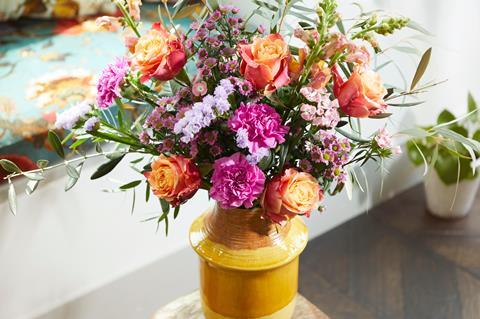
“One of the things in our business is that in aggregate we need to have the right number of bouquets to sell in any one week and sell out always, and we need to have the right number of specific bouquets and they could all come on different delivery days,” Gelbard explains.
“In an ideal world, everything would sell out at precisely 10pm today for delivery tomorrow but that perfection is hard to achieve.
“There are a few things we do. We figure out how many we’re going to sell based on traffic and marketing inputs, we track if we’re ahead or behind the cumulative curve of where we should be and recommend action based on that because if that message shows up saying ‘not available’ too often then we become less useful to our customers. And we need to figure out how it’s going to work at the individual bouquet level, which is difficult to do because we change our range every week.”
Interspersed with this is whether the algorithm knows that a customer is shopping for a specific type of bouquet – for a family member’s birthday or as a thank you, for example – indicated through saved occasions or intent signals such as clicking through thank you cards in the card selection step.
Finally, Bloom & Wild also calculates the optimum time to send out emails when a customer is most likely to order.
“We understand that people don’t want us to email them all the time so we need to pick our moments – there’s a right frequency and timing for different users,” Gelbard says.
In addition to this attention to detail, the other elements of how Bloom & Wild “cares wildly” are through sustainability and charitable donations.
The company is already climate-neutral as a result of sourcing directly from Kenya, eliminating steps in the supply chain and using forecasting to eliminate waste.
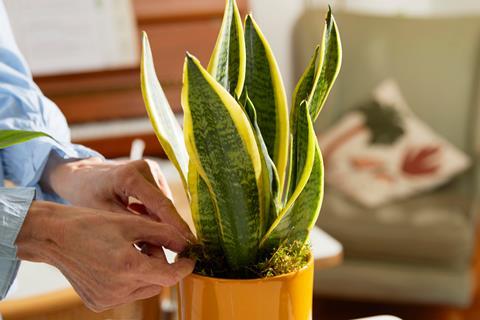
Flowers are one of Kenya’s biggest exports. The mountainous terrain and relatively consistent climate make for good conditions to grow certain types of flowers all year round without the need for heated greenhouses.
Gelbard quotes a study from Cranfield University that shows the impact of growing a flower in a heated greenhouse has six times the carbon impact of growing a flower in Kenya and putting it on a plane to northern Europe.
To ensure full transparency, Bloom & Wild studies its scope 1, 2 and 3 emissions and offsets any carbon it does produce through payments, which it seeks to allocate to sustainability schemes in Kenya.
At the customer end of the business, the company is attempting to break away from the typical flower-gifting occasions and encourage people to celebrate everyday moments, which is something the pandemic has boosted
“At the start of Covid, we really didn’t know what to expect and how people would respond. It turned out that there was a real increase in demand, and the single biggest driver was people sending flowers as a substitute to seeing them in person,” Gelbard says.

Aron Gelbard is one of the leaders featured in the Retail 100 2021 – find out who else made the ranking of the most influential people in retail here
“Many people discovered Bloom & Wild for the first time during lockdown, either as the sender or recipient, and one of the many ways that we grow is by people receiving our product and going on to become a customer – half of our customers have initially discovered us by receiving the product or by word of mouth.
One thing Gelbard is especially proud of is Bloom & Wild’s thoughtful marketing. Since 2017, when the business received requests from customers to be kept off their Mother’s Day mailing lists, each year Bloom & Wild has gone one step further to keep sensitive occasions separate from those customers who need it.
An initial opt-out email to customers in 2019 received 17,000 opt-outs in the first day and was discussed across social media and in Parliament.
In 2020, Bloom & WIld created a holistic experience for customers who opted out so they would see no products related to that sensitive occasion on the website or the app.
Bloom & Wild also began a campaign to bring other brands and businesses onboard, gifting them the tools to also remove mentions of certain products for customers. The campaign currently has 170 members including Wagamama’s and Papier, while big businesses such as Tesco and Marks & Spencer have also begun the practice of sending opt-out emails.
Acquisition and expansion
So, what is next for Bloom & Wild?
The business recently acquired Dutch flower etailer Bloomon for an undisclosed sum, in a bid to dominate the European market.
Together, the businesses have 300 colleagues and operate across eight European countries – but crucially, it is only the market leader in the UK.
“The UK is only 4% of the global flower market, so we’ve been focused on expanding internationally, especially in Europe,” explains Gelbard.
“As I did French and German, and they both have good flower industries, they felt like the right place to start when we’ve started to think about scaling across Europe. The flower industry is worth £22bn, so there’s a huge opportunity.”
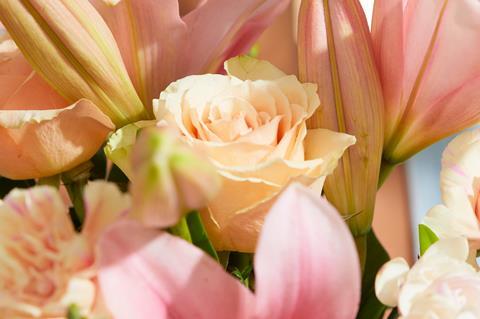
Combined, the businesses will rake in sales “substantially north of” £200m this financial year, making Bloom & Wild the biggest flower business in Europe.
For the financial year to March 2021, the company also expects to report a significant maiden profit and to be profitable in the current year following the acquisition of Bloomon.
By taking advantage of Bloomon’s contemporary-styled bouquets, grower relationships and brand awareness, Bloom & Wild is seeking to become a market leader across the continent with Germany as a specific target.
Bloom & Wild is also focusing on expanding its range into plants and adjacent categories such as vases, while working on its bricks-and-mortar presence through a recent partnership with Sainsbury’s.
Its bouquets are now in 93 Sainsbury’s stores across the UK with sales that have exceeded both party’s expectations.
“We’re trying to be the company that people love and trust in the flower space and if we can increase touchpoints where they can get to know us, then all the better,” Gelbard says.
This goes back to the Mr Muscle analogy: why should flowers not have a superior-branded counterpart that consumers know they can rely on? That is Bloom & Wild’s niche and with an incredible supply chain and a team of data scientists onside, the retailer is confident it will continue to blossom in future.

Consumer Week – September 13-17
Aron Gelbard will be one of the keynote speakers at Retail Week’s Consumer Week.
The pandemic has sent direct-to-consumer sales into overdrive as online sales accelerated and retailers turned to the web to meet their needs.
And it’s not a passing fad: 73% of companies now sell DTC. As the market becomes more crowded, how can retailers make their offerings stand out to shoppers? And how can retailers yet to harness DTC make headway?
During an intimate fireside chat, hear from Bloom & Wild CEO and co-founder Aron Gelbard – a DTC brand breaking the mould.
Check out the agenda and register your place here.




















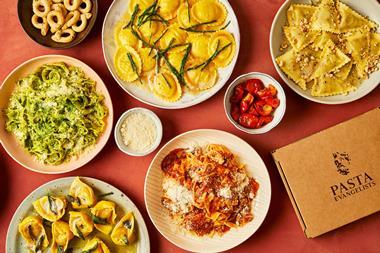
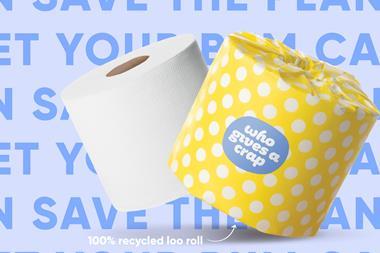
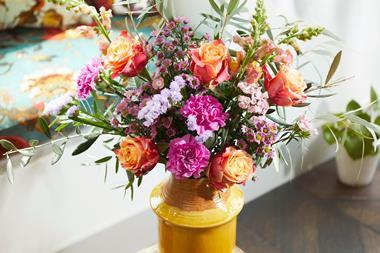



No comments yet